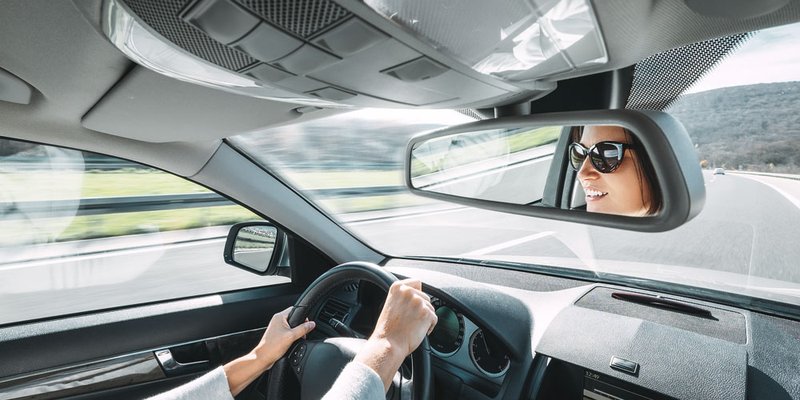
If you are not redirected within 30 seconds, please click here to continue.
Samedi: 10h – 16h HAE

If you are not redirected within 30 seconds, please click here to continue.
If you are not redirected within 30 seconds, please click here to continue.
Apps That Monitor Your Driving May Save You Some Bucks

Table of Contents
- Telematics apps harness a user’s smartphone, and built-in features such as the time of day, GPS and gyroscope, to measure a range of driving behaviours. Insurers use this data to assess the risk profile of a specific driver to reward safer drivers with discounts on their insurance.
- Telematics was first used for auto insurance in Canada in 2013 and has since grown to be included in many insurers’ product offerings.
- In Ontario as of November 2020, drivers using usage-based insurance (UBI) programs who exhibit high-risk driving habits may face a surcharge, meaning they could pay more.
As the pandemic lingers, many Canadians continue to find themselves working from home. That, in turn, means people’s driving habits have changed significantly from pre-COVID times. They may be driving less or not at all, leading them to seek ways to reduce their auto insurance bills.
One way you can potentially lower your premium is by enrolling in a usage-based insurance (UBI) program. Several Canadian insurance providers do offer mobile applications to measure an individual driver’s behaviour and reward them with discounts on their premiums for driving less or consistently demonstrating safe-driving habits.
If you never text and drive, obey the speed limit, tend to take corners gently and rarely drive late at night, why should you have to pay the same insurance rates as others who may have more risky driving habits than you do?
That is the idea behind the driving apps insurers provide that use telematics and algorithms, and then apply UBI principals over time. UBI differs from traditional auto insurance in that it uses real-time data to make decisions about insurance pricing, in addition to the more typical information gathered about a driver, including their driving record.
Through the use of this type of technology and insurance offering, motorists in several provinces can now potentially get discounts if their measured driving behaviour is perceived as low risk. However, in Ontario as of November 2020, drivers who exhibit high-risk driving habits may face a surcharge, meaning they could pay more.
Don't waste time calling around for auto insurance
Use RATESDOTCA to shop around, and compare multiple quotes at the same time.
What is telematics?
Telematics (the joint science of telecommunications and informatics) in vehicles used to refer to plug-in or pre-installed devices. More often, this technology is available through mobile applications. These apps harness a user’s smartphone, and built-in features such as the time of day, GPS and gyroscope, to measure a range of driving behaviours. The app sends the driver data to the insurers, which they, in turn, use to assess the risk profile of a specific driver to reward safer drivers with discounts on their insurance.
One online reviewer describes these apps and gadgets as “fitness trackers for driving." But instead of monitoring calories burned and the number of steps taken in a day, these tools let you see where you are accelerating too quickly, stopping too suddenly or are distracted by your phone. The ultimate goal of these apps, beyond discounts, is to lead drivers into being more conscious of their driving, and hopefully cut down on tickets and accidents by encouraging them to build better habits over time.
How is this changing auto insurance?
The number of insurers offering telematics is expected to increase. Canadian insurance companies are learning from the experiences of their counterparts in the U.S. and Europe. Telematics was first used for auto insurance in Canada in 2013 and has since grown to be included in many insurers’ product offerings. And there is a growing appetite for this.
In fact, according to Insurance Business Canada, a 2018 report revealed that 74% of Canadians surveyed said they would agree to use an app that monitors their driving habits to receive a “personalized car insurance premium.”
Interested? Here are four apps to try:
MyPace (CAA)
MyPace is an exclusive first in Canada pay-as-you-go auto insurance option for consumers. Consumers insured under this program can qualify for a considerably discounted rate if they drive less than 9,000 kilometres per year. (The average Canadian motorist, by CAA’s estimates, drives more than double that amount, logging in 20,000 kilometres annually.)
With MyPace, drivers must download an app on their smartphone and install a telematics device in their car. Then, get out and drive; it’s that simple. Consumers are charged based on how much they actually drive, not the estimate usually made with traditional policies. There’s a basic rate for coverage even when the vehicle isn’t in use, and another charge applies for every 1,000 kilometres of driving. Kilometres are reloaded automatically in 1,000-kilometre increments in this pay-as-you-go model.
my Drive (Intact)
Intact Insurance says users of its my Drive app could save up to 30% in auto insurance premiums – starting with a 5% discount immediately just for signing up, and up to another 25% afterwards by using the app consistently over time. The app calculates an individual’s safety score using data such as:
- Vehicle location
- Average speed
- Distance travelled
- Accelerometer and gyroscope data (acceleration, deceleration, cornering events)
- Start and end date and time of travel
- Road type
- Weather and traffic conditions
- Speed limits
Drivewise (Allstate)
Drivewise is a personalized app that allows drivers to learn more about their driving habits after the completion of each trip, and also allows them the opportunity to demonstrate their safe driving behaviours for the chance to save up to 30% on their auto insurance. Once downloaded, it monitors a customer’s driving and provides them with detailed information on their driving and estimated savings based on:
- Safe speeds: keeping speed below 125 km/h
- Safe hours: limiting trips between 11 p.m. and 5 a.m.
- Safe stops: limiting hard braking
The Drivewise app is available to Allstate auto insurance customers in Ontario, Alberta, and a couple of other provinces currently. Those interested in trying the app can download the TESTDrivewise version to track their driving habits for five trips and receive feedback to improve their driving skills, in addition to an automatic 5% discount for current customers. The test version is available to all drivers in participating provinces, even if they aren’t Allstate customers.
Ajusto (Desjardins)
A couple of years ago, Desjardins began offering a telematics device that plugged into a vehicle’s diagnostic port, to track driver behaviour (if a client so desired). Now, there’s no plug-in device required. With the Ajusto app, all you need is your smartphone. The app will tell you how far you’ve travelled and whether you’ve been speeding and uses the phone’s gyroscope to determine if you’ve cornered a little too aggressively. But Adjusto also keeps track of a driver’s consecutive streak of “undistracted” trips – the ones during which the cell phone wasn’t used while driving. Your final score is calculated at the end of an analysis period. If you’re eligible for a discount, it will be applied to your auto insurance premium right away. It’s only available to Desjardins’ clients.
Privacy and the future
With all the data being tracked and shared with providers, some people are a bit concerned about privacy, and how this might negatively impact their car insurance rates.
For example, what if the app determines you are making too many hard stops (but you live in the city, and this is common in city driving)? Others worry these apps may somehow have access to your other private data and be able to use it against them. While insurance providers all vow to keep data private, the answer is simple: these programs are all voluntary. If you are not comfortable with the idea, you don’t need to sign up!
Most younger people who have grown up with smartphones have a greater comfort level with location and data tracking. And as these apps get more sophisticated, they could have exciting potential in the future, possibly offering things like determining who was at fault in an accident or be able to call for help when needed.
Latest Articles
Get money-saving tips in your inbox.
Stay on top of personal finance tips from our money experts!









